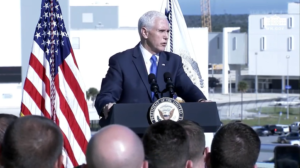
The White House has directed the Department of Defense to move forward with establishing a U.S. Space Command, without details of exactly when, or how, a new unified combatant command related to space would be stood up.USSPACECOM, as it will be known, will be the 11th combatant command in the U.S. military and will serve alongside other functional commands and led by a four-star flag officer, Vice President Mike Pence said in remarks Dec. 18 at Cape Canaveral Air Station,…

 By
By 











